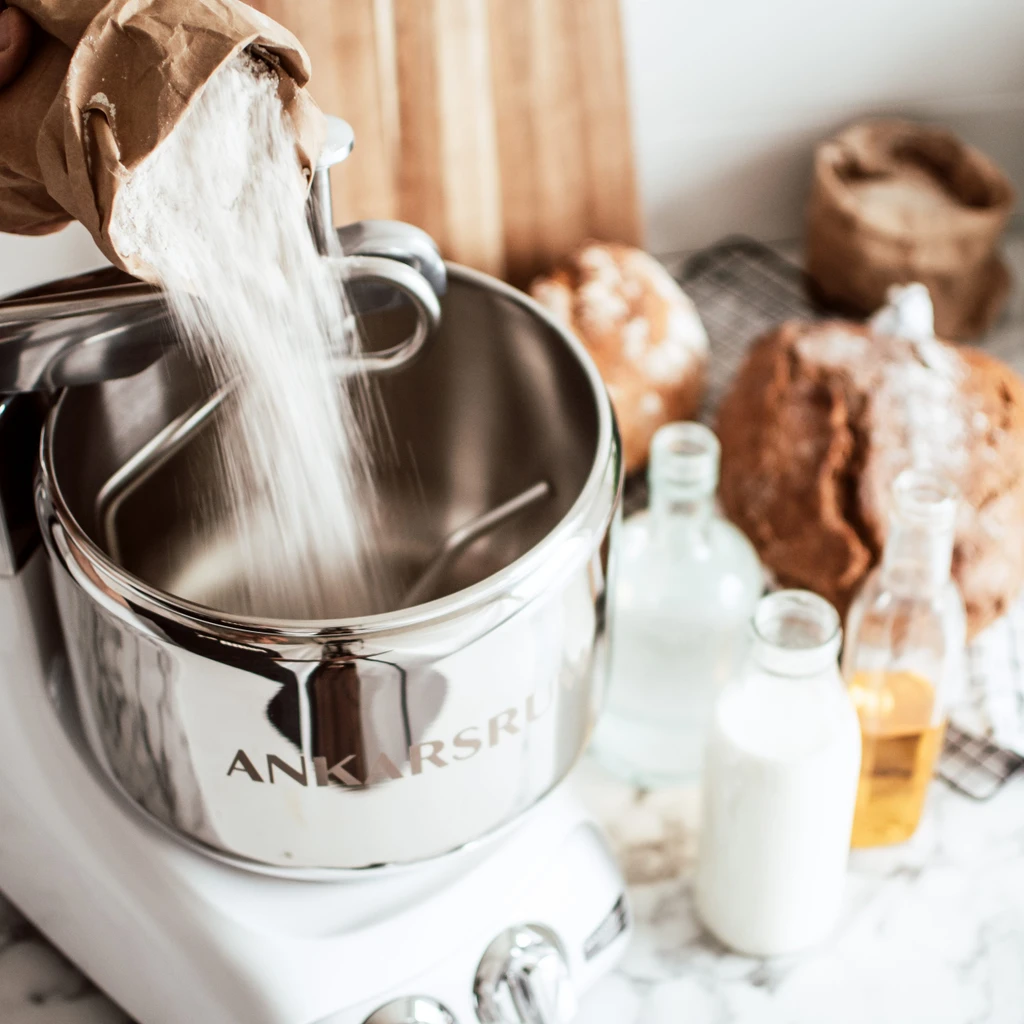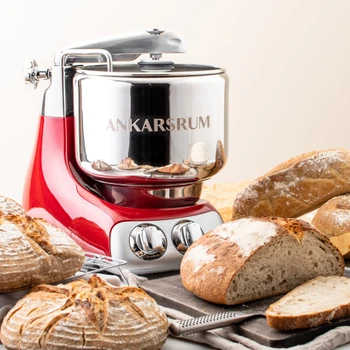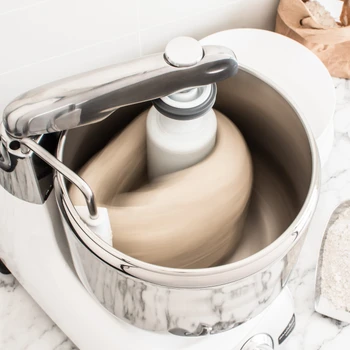Learn a thing or two about hydration with Ankarsrum
Hydration in bread baking is about the flour’s ability to absorb liquid. Depending on the flour’s composition of starch and protein, it will have different capacities to absorb liquid.
If a dough has too little or too much water, there is a great risk that you will get an undesirable result.
Different types of flour require different degrees of hydration, and the best way to learn the optimal hydration of a flour is to bake with it a few times. Test the amount of liquid, and get a feeling for the “right” dough texture.
When you test bake, start with the amount of flour rather than the amount of liquid. Also, it is important to add all the flour at the same time so that it all has the same conditions for development.
A sifted flour, such as wheat flour, requires less liquid, and thus has a high liquid absorption capacity. A coarse flour needs more liquid and more time to absorb water, and thus has a low liquid absorption capacity.
It is not possible to predict the exact amount of hydration that will optimize your particular dough, but a rule of thumb is around 65% for white bread, and around 70% for a coarser one.
Low hydration – low fluid absorption
Low hydration flour, such as rye flour, creates a firmer dough that is easier to shape and cut. The dough ferments more slowly, and the bread is more compact.
Scalding a coarser flour improves its ability to absorb water. Scalding means that boiling hot water is poured over the flour, mixed in, and allowed to stand.
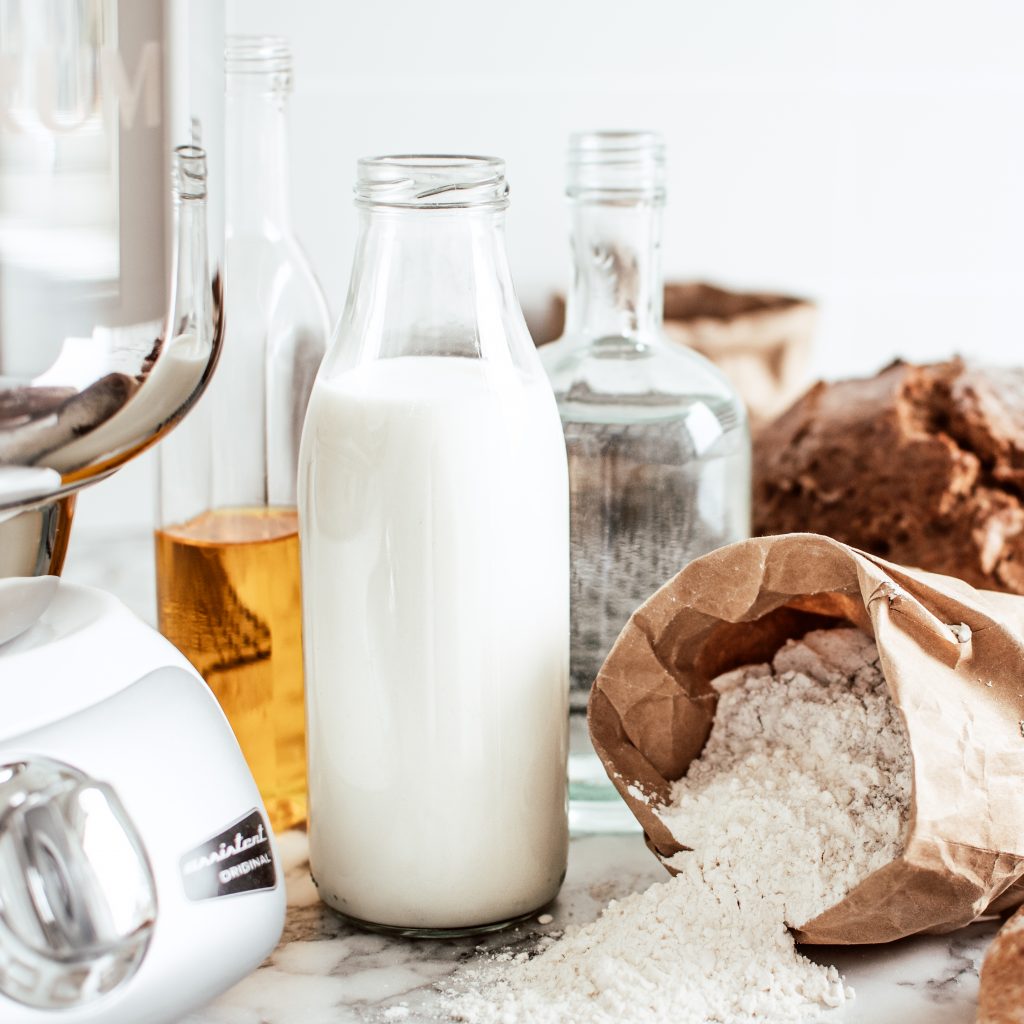
High hydration – high fluid absorption
High hydration flour, such as wheat flour, creates a dough that is sticky and more “difficult to work.” Therefore, it will turn out best when it is kneaded for a long time in a machine. The dough ferments faster, and often needs more fermentation.
The higher the hydration, the softer the bread, with larger air holes and a thin, crispy exterior.
Calculate hydration
To calculate the hydration of a bread, multiply the amount of flour by the desired percent hydration.
Here is an example. If you want to bake a bread with 75% hydration, and you are using 500 g of flour, multiply the amount of flour by 0.75:
For 75% hydrogenation: 0.75 times 500 (grams of flour) = 375 (grams of liquid)
So you need 375 g of liquid in a recipe calling for 500 g of flour to bake a bread with 75% hydration.
If you have an existing bread recipe and want to know its hydration percentage, you can calculate it by dividing the amount of liquid by the amount of flour. This can make it easier to adapt a recipe if, for example, you want to double or halve the amount.
For a recipe that calls for 500 g flour and 400 g liquid, calculate the hydrogenation as follows: 400/500 = 0.8 = 80% hydrogenation.
Everything that contains water, including eggs and butter, should be included in the amount of liquid when calculating the hydration of a bread.
Since all flour should be added from the start, you should begin with the amount of flour, rather than liquid, when determining the hydration.
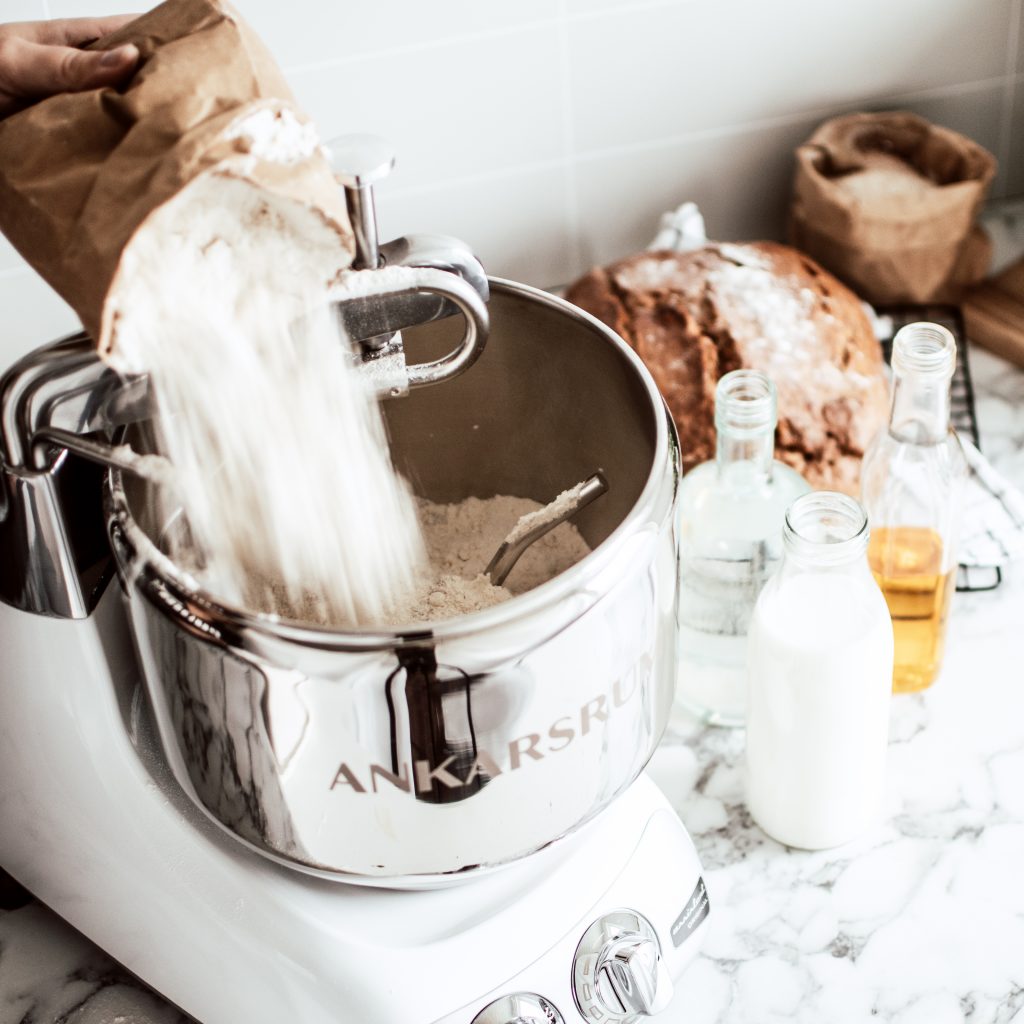
Double hydration
Double hydration means that you save some of the liquid and add it at the end of kneading. This gives the bread extra elasticity and usually larger air holes.
